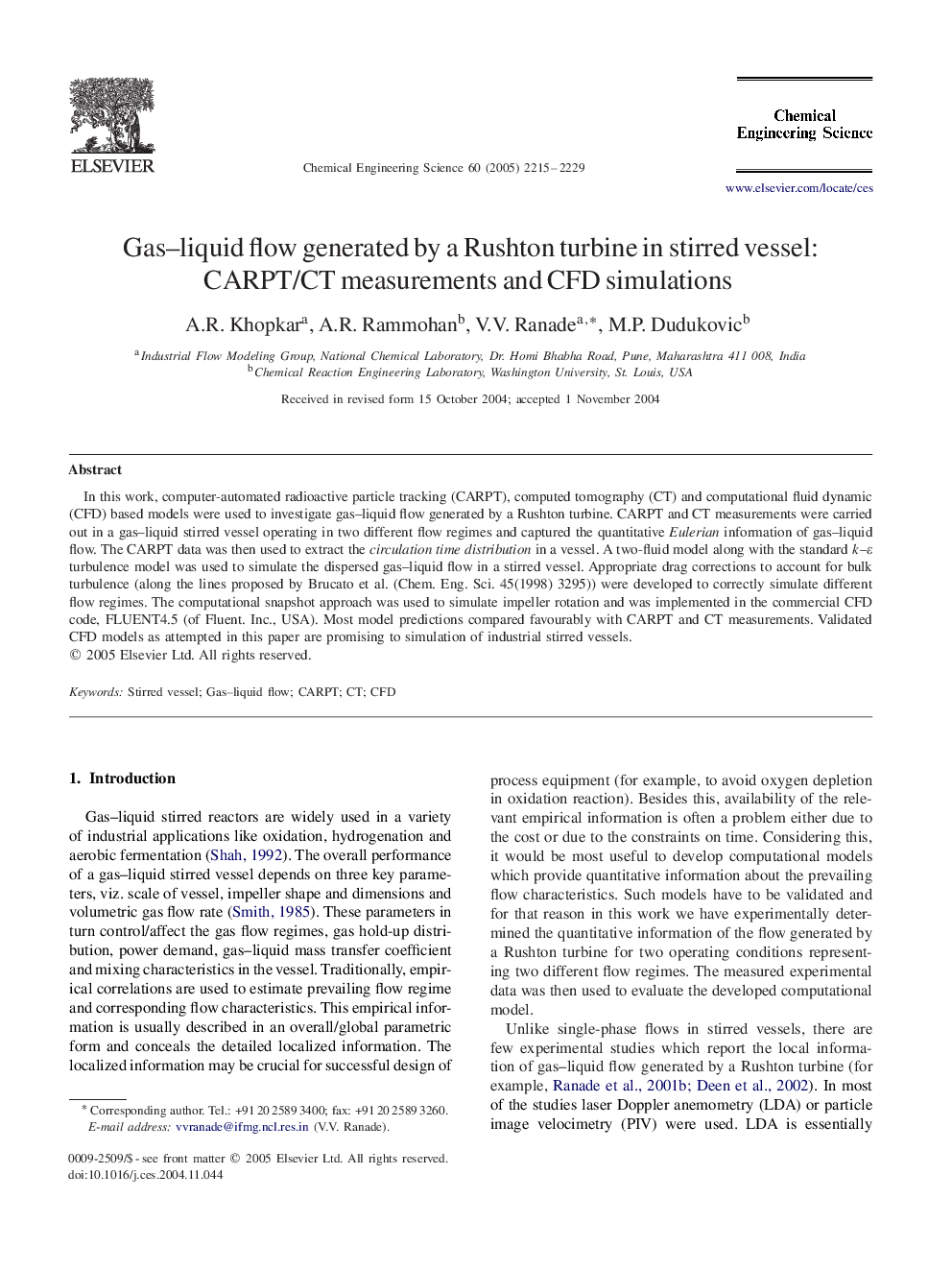| Article ID | Journal | Published Year | Pages | File Type |
|---|---|---|---|---|
| 160428 | Chemical Engineering Science | 2005 | 15 Pages |
In this work, computer-automated radioactive particle tracking (CARPT), computed tomography (CT) and computational fluid dynamic (CFD) based models were used to investigate gas–liquid flow generated by a Rushton turbine. CARPT and CT measurements were carried out in a gas–liquid stirred vessel operating in two different flow regimes and captured the quantitative Eulerian information of gas–liquid flow. The CARPT data was then used to extract the circulation time distribution in a vessel. A two-fluid model along with the standard kk–εε turbulence model was used to simulate the dispersed gas–liquid flow in a stirred vessel. Appropriate drag corrections to account for bulk turbulence (along the lines proposed by Brucato et al. (Chem. Eng. Sci. 45(1998) 3295)) were developed to correctly simulate different flow regimes. The computational snapshot approach was used to simulate impeller rotation and was implemented in the commercial CFD code, FLUENT4.5 (of Fluent. Inc., USA). Most model predictions compared favourably with CARPT and CT measurements. Validated CFD models as attempted in this paper are promising to simulation of industrial stirred vessels.
